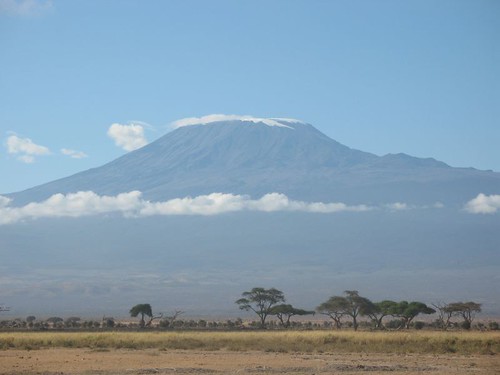The Final Assessment: Geographic
Tanzania in the Future
Tanzania can boast of a diverse and unique physical geography examples
of which we have discussed in our blog. The
mainland is a part of the Great Valley Rift which is a continuous geographic
trench (3700 miles). This chasm is caused by movement of the tectonic plate. The illustration below illustrates the same
rift that helped define the Tanzanian geography. Rifts are usually preceded by huge volcanic
eruptions such those from Ngorongora and Mt Kilimanjaro. These geological actions created the
backflows for the formation of Lake Victoria.
Each action (process) resulted in a reaction (form) that created new
geological constructs.
East Africa's
Great Rift Valley: A Complex Rift System by James Wood and Alex Guth Michigan
Technological University.
Geological
formations in the Great Rift Valley of Tanzania
The Same
Actions Get the Same Results
If left
unchecked, our disregard for the natural balances in nature may be the most
critical factor affecting the rate at which geographic changes occur, and then negative
changes which would have normally occurred over a longer period of time will be
exponentially accelerated. Information considered when developing support
for the hypothesis include: Warming of the Indian Ocean (3.6 degrees in 40
Years), severe droughts and floods in 2012, CO2 concentration in the atmosphere
at 280 parts per million, and changing weather patterns.
Landscape
Tanzania 2021: Kilimanjaro
already having lost 80% of its ice pack will be devoid of glaciers and
snow. Coastal regions will see slight
increases in coastline erosion due to rising ocean water levels and inland
lakes will receive more precipitation. Drought and flooding will become more
severe increasing soil erosion. Average temperatures will hot affecting all living things. Migrating animals will
find less fertile pastures. Ngorongora
crater will see a slight loss of plant life in the low lying valley, but the
Dodo Region will be more desert like.
NASA Earth Observatory Photo illustrates the receding snow and glacial ice on Kilimanjaro in 2009.
NASA Earth Observatory Photo illustrates the receding snow and glacial ice on Kilimanjaro in 2009.

Droughts
are so severe wells are dug deeper and deeper as seen of the woman exiting one
in the above photo. This was not
mitigated in 2012.
Landscape
Tanzania 2112: The
circumstances in 2112 are those of 2021 magnified by 10. Additional
concerns are the Indian Ocean rises robbing the coast line of as much as ten
feet of land, coastal islands begin to disappear, basal weathering accelerates eroding lake
islands, and deforestation caused by
nature are compounded in the quest for new farm land. Forests, natural reabsorption agents for CO2
, are lost in the quest to grow food. Arid lands become more desert like. The DoDo Region is rutted with gullies from
flood waters that come with the torrential rains. Winds create tornado like storms there. Ngorongora
has becoming marsh land as the water
comes in and has no outlet.
Landscape
Tanzania 3012: 21th century heat waves increase the
average temperature by 6.4 degrees based on our current 1.4 degree increase
every 230 years. Ngorongora is a
lake. Islands off the coast are covered
with ocean water which has moved inland 23 feet due to the changing hydrologic cycle, increased ocean temperatures
and trade winds. The coral reefs are gone.
The country is plagued by wildfires, heat waves and tropical storms. Carcasses of animals litter the land. Plant and animal life have either adapted or
become extinct. Lush green lands are few.
Climate is
temperature, humidity, wind and precipitation all of which are affected by the
land’s latitude, terrain, altitude and bodies of water. Tectonic plate movement
and volcanic eruption change the topography of the land and the climate. The
eruption of Mount Tambora produced a year without a summer. If
these events occurred with global warming, it could well impact the earth for
tens of thousands of years.
Weather systems
and climate changes have always occurred but usually over hundreds of thousands
of years and were not created by changes outside of nature.
References
Chanton, Jeffery.
"Global Warming and Rising Oceans." Actrionbioscience.org.
Actionbioscience, Sept.-Oct. 2002. Web. 27 Apr. 2012.
Duncan, Sandi.
"How Do Volcanos Affect Our Weather?" Farmersalmanic.com.
Sept.-Oct. 2009. Web. 28 Apr. 2012.
"Geography of
Tanzania." Www.howstuffworks.com. Web. 27 Apr. 2012.
Holman, Teresa.
"The Effects of Global Warming on Continental Oceans." Www.ehow.com.
May 2011. Web. 28 Apr. 2012. <27>.
Montague,
Fred. 2006. Environmental Notebook: Observations, Principles, Trends, and
Ideas about Life on Earth.
Wanship, UT: Mountain Bear Ink.
Woods, James, and
Alex Guth. "East Africa; Great Rift Valley: A Complex Rift System." Geology.com.
Web. 28 Apr. 2012. <http//gelogy.com>.














